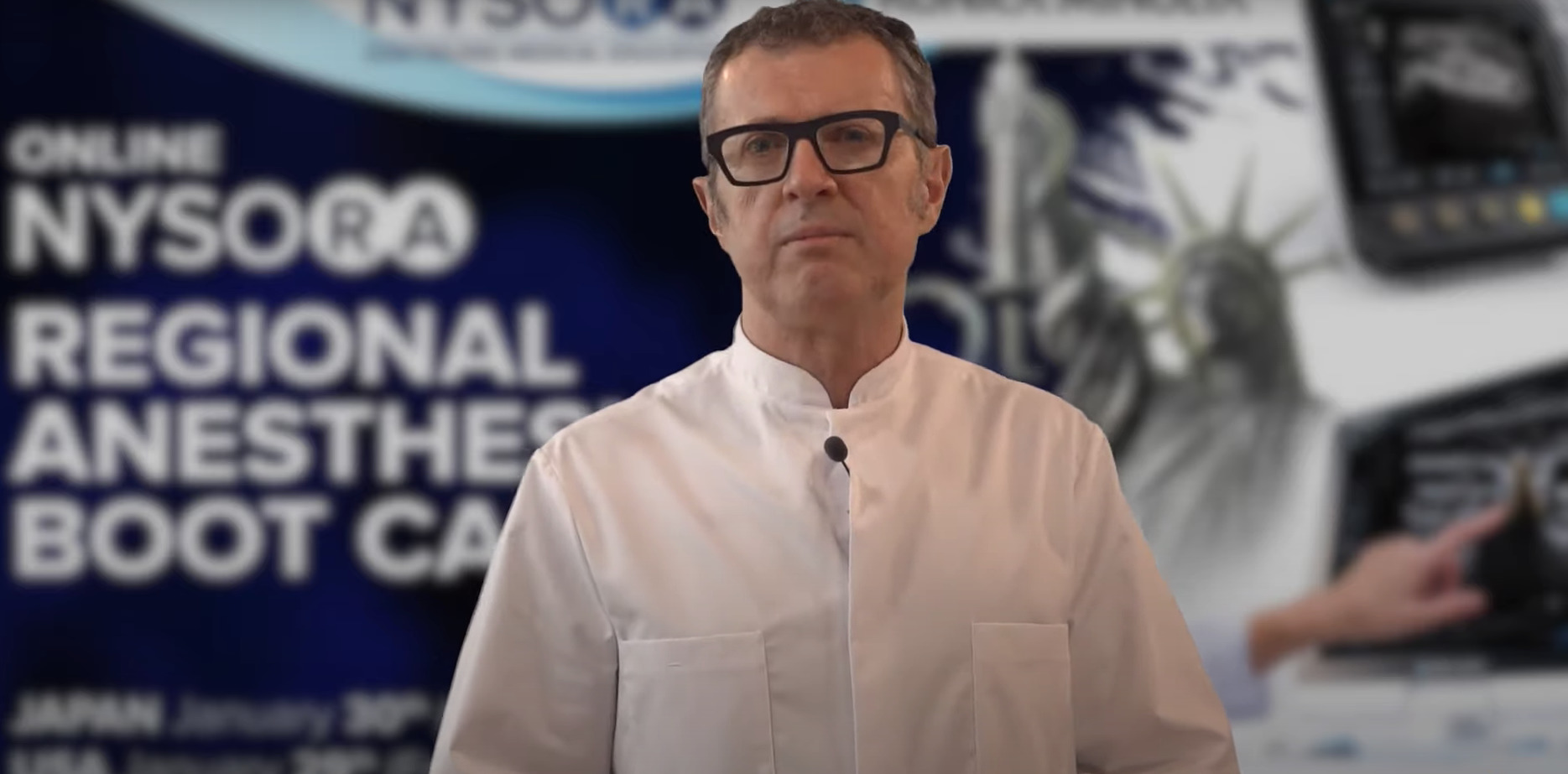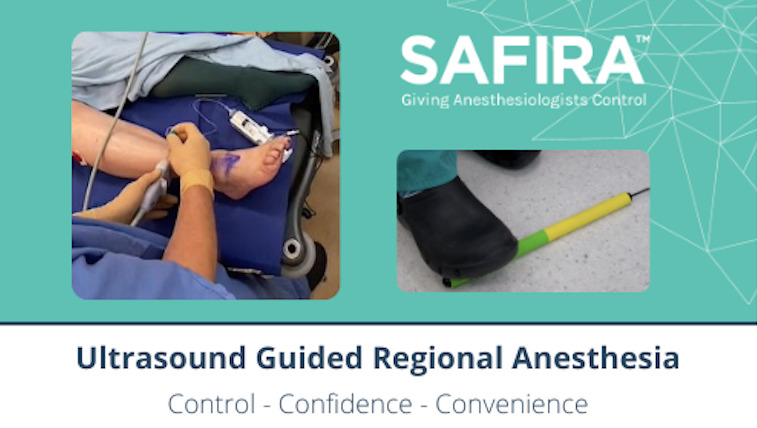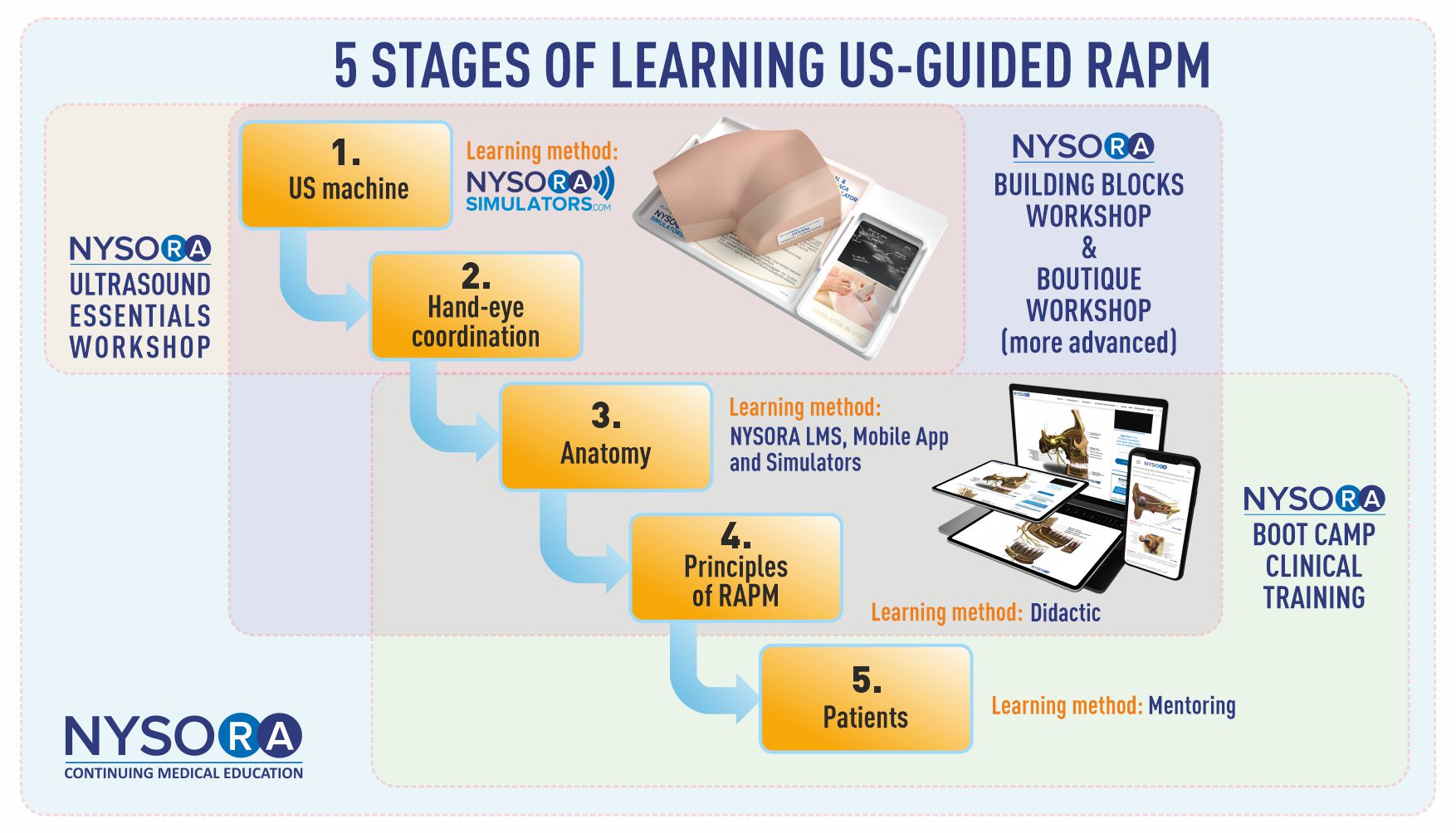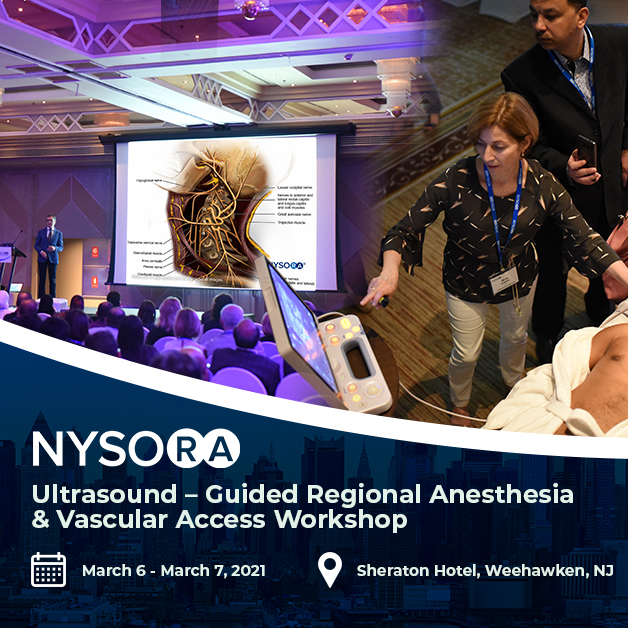There are various costs associated with any medical procedure. A new technology, ‘SAFIRA™: SAFer Injection for Regional Anesthesia’, provides benefits for the regional anesthesia process which could help create time and cost savings for healthcare providers, whilst promoting better outcomes for clinicians and their patients.
Using SAFIRA™, an anesthesiologist can conduct the regional block themselves. The anesthesiologist controls the injection of the anesthetic using a foot pedal operator. This means that a regional block becomes a single person procedure. This creates efficiency gains as the traditionally used second operator to control the syringe is no longer required.
Making regional anesthesia a single person procedure can also promote time saving benefits. There is no need to wait to proceed until a suitable supporting operator has joined the team in the operating room. As the anesthesiologist is in control of the injection, time is saved as they do not need to communicate with the second operator about how the syringe pressure feels. The anesthesiologist can now use their own judgement and make any necessary adjustments immediately.
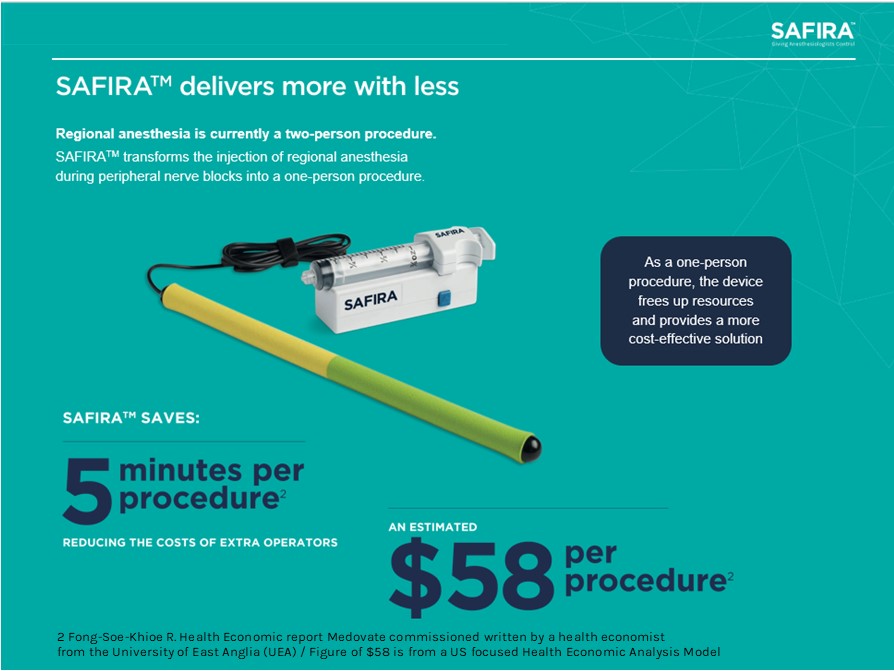
SAFIRA™ delivers more with less: Health Economic Modelling (US focused) estimates a saving of $58 per regional anesthesia procedure.
In a study involving 30 anesthesiologists, when asked about potential time savings from using SAFIRA™, 23 out of 30 participants believed using SAFIRA™ would allow them to save up to 5 minutes (or more) per procedure[1].
SAFIRA™ also incorporates a design feature which prevents injection at pressures above 20psi. Studies have shown where injection pressures are above 20psi, the risk of accidental nerve damage is increased. Using SAFIRA™ can help reduce incidence of nerve damage. This in turn can reduce the need for follow up treatments to manage either long-term, or transient nerve damage. This can improve patient safety and reduce the risk of costly and time consuming litigation cases.
A Health Economics Model and Budget Impact Analysis commissioned by SAFIRA™ manufacturer Medovate Ltd, has been used to calculate potential cost savings per regional anesthesia procedure. The model incorporates various parameters around the current pathway with associated costs for healthcare providers in the US and then compares that cost with the costs of using SAFIRA™. For the US, the model has identified an estimated $58 per procedure saving.[2]





